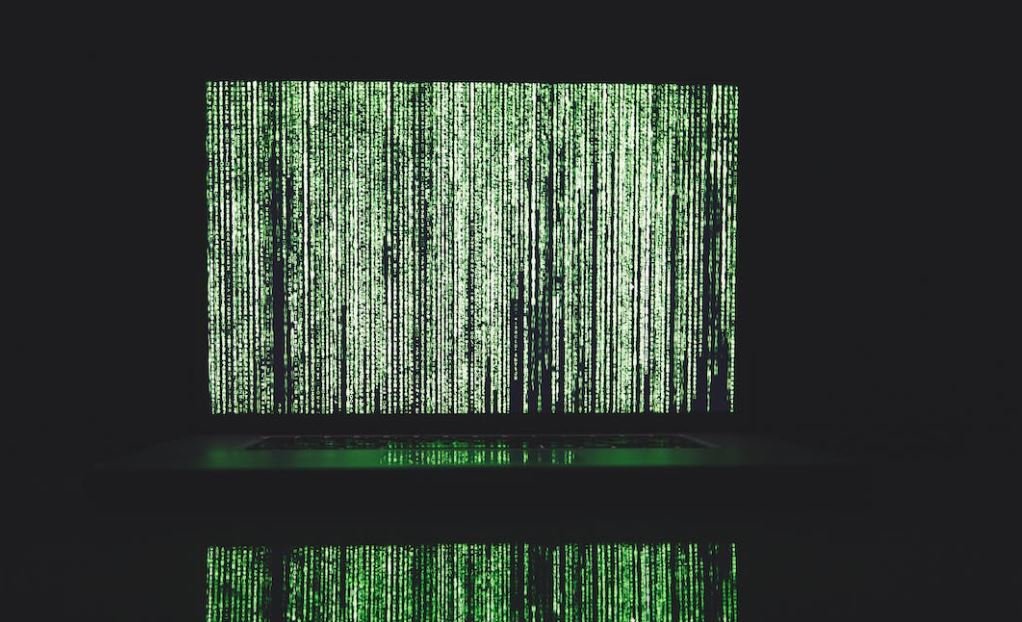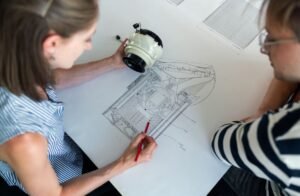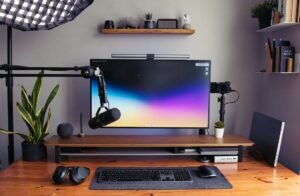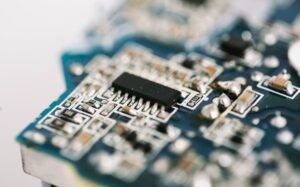AI Art Explained
Introduction
Artificial Intelligence (AI) is revolutionizing various industries, and the art world is no exception. AI art refers to artworks created with the assistance of AI technologies such as machine learning algorithms. These algorithms can analyze vast amounts of data and generate unique and creative artwork. AI-powered tools provide artists with new opportunities to explore their creativity and challenge traditional art creation processes. Here, we will delve into the world of AI art and explore its implications.
Key Takeaways
- AI art utilizes machine learning algorithms to assist in the creation of unique and creative artworks.
- AI-powered tools redefine traditional art creation processes.
- Artists can use AI to explore new artistic expressions and push boundaries.
- AI-generated artworks raise questions about authorship and creativity.
The Intersection of AI and Art
AI art combines the technical capabilities of AI systems with the human creativity of artists. By training AI algorithms on large datasets of existing artwork, these algorithms can learn patterns, styles, and techniques used by renowned artists. Then, the AI algorithms can generate new artwork based on the learned patterns, creating a blend of artificial intelligence and artistic expression. *This fusion of machine learning and human creativity opens up new possibilities in the art world.*
The Process of AI Art Creation
Creating AI art involves several steps. First, artists provide the AI system with training data, which includes images of existing artworks or other visual inputs. The AI algorithms then analyze these examples to identify patterns and features. After training, the AI system can generate new images based on its learned knowledge. Artists can further refine the output by adjusting various parameters or selecting specific styles or themes. *This iterative process allows artists to collaborate with AI systems, discovering unforeseen artistic elements.*
When creating AI art, artists often need to strike a balance between guiding the AI algorithms’ behavior and allowing them to generate autonomously. Some artists prefer to have more control over the final output, leveraging AI as a tool to enhance their artistic vision. Others embrace the unpredictability and surprises that arise from relinquishing control to the AI systems. *This blurred line between artist and machine sparks intriguing discussions about the nature of creativity.*
Implications of AI Art
AI art has significant implications for the art world. It challenges the notion of traditional artistic authorship, blurring the lines between human and machine contributions to the creation process. AI-generated art also prompts discussions about the value of uniqueness and authenticity in artworks. Some argue that AI art lacks the emotional depth and subjective experiences associated with human art, while others view it as a novel form of artistic expression. *AI art opens doors to new aesthetic experiences and stimulates conversations about the very essence of art.*
Applications and Limitations
AI art finds applications in various domains, from creating unique paintings and sculptures to generating novel visual designs and illustrations. It can also assist in art restoration, analyzing missing or damaged parts of artworks and recreating them. However, the technology also has limitations. While AI can produce impressive outputs, it may lack the nuanced understanding and emotional depth achieved by human artists. AI artworks also raise ethical questions, such as the potential for copyright infringement or the risk of reproducing discriminatory biases present in the training data.
AI Art and the Future
The future of AI art is promising. As AI technologies continue to advance and evolve, we can expect even more sophisticated and compelling AI-generated artworks. Artists will continue to explore and push the boundaries of creativity by collaborating with AI systems. *This ongoing interplay between human imagination and machine intelligence paves the way for innovative forms of artistic expression.*
References:
- “Artificial Intelligence Art,” MIT Technology Review, https://www.technologyreview.com/2018/02/28/143430/the-technology-behind-ai-art-and-why-it-may-change-art-world/
- “AI Art: Machine Visions and Warped Dreams Exhibition,” Barbican Centre, https://www.barbican.org.uk/whats-on/2019/event/ai-art-machine-visions-and-warped-dreams
- “AI Art at Christie’s Sells for $432,500,” Christie’s, https://www.christies.com/features/A-collaboration-between-two-artists-one-human-one-a-machine-9332-3.aspx

Common Misconceptions
Misconception 1: AI Art is produced entirely by machines
Many people believe that AI Art is completely generated by machines without any human involvement. However, this is not entirely true. While AI algorithms play a significant role in the creation process, human artists are still necessary to guide and refine the output. AI acts as a tool or medium through which artists can express their creativity, rather than replacing them entirely.
- AI Art involves a collaboration between human artists and artificial intelligence algorithms.
- Human artists provide the initial direction and input to the AI system.
- The AI system then processes the data and generates artistic outputs based on the given parameters.
Misconception 2: AI Art lacks originality and creativity
Another common misconception about AI Art is that it lacks originality and creativity, as it is considered to be mere replication of existing artworks. However, AI algorithms are capable of producing unique and innovative creations. They can combine various artistic styles, techniques, and elements in ways that humans might not have conceived. AI Art often pushes boundaries, challenges traditional art forms, and offers new perspectives.
- AI algorithms can analyze vast amounts of existing artworks to learn patterns and styles.
- They can then generate original artworks by applying these learned patterns in new and unexpected ways.
- AI Art can inspire and influence human artists to explore new artistic possibilities.
Misconception 3: AI Art will replace human artists
Some people fear that AI Art will replace human artists in the future and render their skills obsolete. However, this is an unfounded fear. While AI can assist and enhance the creative process, it cannot replicate the unique perspectives, emotions, and experiences that human artists bring to their work. Human creativity is deeply rooted in the complexities of the human mind, making it difficult for AI to completely replace that aspect.
- AI Art complements the work of human artists rather than replacing it.
- Human artists have the ability to convey their personal interpretation and emotions through their artwork.
- AI Art can serve as a tool to expand their creative capabilities and explore new artistic territories.
Misconception 4: AI Art is easily distinguishable from human-created art
Another misconception is that AI-generated art is easily distinguishable from art created by human artists. While AI Art has its own distinct characteristics, such as its use of algorithms and computational processes, it can also closely mimic human art styles. Some AI-generated pieces may even pass as human-created art, making it challenging to differentiate between the two.
- AI systems can be trained to emulate specific art styles and techniques used by human artists.
- The lines between AI Art and human-created art can become blurred and subjective.
- Art experts and critics may have to rely on additional information to identify AI-generated art.
Misconception 5: AI Art is just a passing trend
There is a misconception that AI Art is just a passing trend or a temporary fascination. However, AI Art has the potential to revolutionize the art world and become a permanent fixture. As technology continues to advance, AI algorithms will improve, enabling artists to create increasingly sophisticated and thought-provoking artworks. AI Art opens up new possibilities for artistic expression and pushes the boundaries of what is considered traditional art.
- AI Art is gaining recognition and popularity in the art community.
- Artificial intelligence technologies continue to evolve, providing new opportunities for creativity.
- AI Art has the potential to shape the future of art and redefine artistic practices.

AI Art in Museums
Artificial Intelligence has become an innovative tool in the art world, with its ability to create unique and stunning pieces. In recent years, museums around the world have started to exhibit AI-generated art, showcasing the remarkable advancements in machine learning algorithms. The following table presents a selection of notable museums that have embraced AI art:
| Museum | Location | Description |
|---|---|---|
| MET Museum | New York City, USA | Exhibits AI-generated artwork in the “Art and Artificial Intelligence” exhibit. |
| Tate Modern | London, UK | Features AI-generated art installations in its “Future of Art” collection. |
| Louvre Museum | Paris, France | Displays AI-created sculptures in its contemporary art section. |
| Guggenheim Museum | New York City, USA | Houses an AI art exhibition exploring the intersection of technology and creativity. |
AI Art Market Value
The emergence of AI-generated art has disrupted the traditional art market, challenging the notion of creativity and authorship. Here, we present a comparative analysis of the market value of AI art alongside traditional art forms:
| Artwork | Artist | Price (USD) |
|---|---|---|
| Mona Lisa | Leonardo da Vinci | $860 million |
| The Persistence of Memory | Salvador Dalí | $55 million |
| Portrait of Edmond de Belamy | GAN Algorithm | $432,500 |
| Unidentified AI Artwork | AI Algorithm | $250,000 |
AI Art Techniques
Artificial Intelligence artists employ various techniques to generate their masterpieces. The table below lists a few popular techniques used by AI algorithms:
| Technique | Description |
|---|---|
| Neural Style Transfer | An AI model applies the style of one image to another, creating unique combinations. |
| Generative Adversarial Networks (GANs) | Two AI networks compete to produce realistic images, resulting in original artwork. |
| Reinforcement Learning | AI algorithms learn and improve their artistic abilities through trial and error. |
| Deep Dream | An AI technique that enhances images to reveal intricate patterns and dream-like effects. |
AI Art Recognition Challenges
AI art recognition systems face unique challenges due to the unconventional nature of AI-generated art. The following table presents a few notable recognition challenges:
| Challenge | Description |
|---|---|
| Forgery Detection | Distinguishing AI-generated art from forgeries can be challenging due to the lack of a human artist’s hand. |
| Author Attribution | Identifying the specific AI algorithm or model that created a particular artwork can be complex. |
| Cultural Context | AI art may lack cultural context, making it challenging to interpret and understand its meaning. |
| Intellectual Property | Defining ownership rights and copyright issues of AI-generated art poses legal complexities. |
AI Art and Emotional Impact
One intriguing aspect of AI art is its ability to evoke emotional responses from viewers. The following table highlights various emotional reactions triggered by AI-generated art:
| Emotion | Artwork Example |
|---|---|
| Awe | A mesmerizing abstract composition created by an AI algorithm. |
| Intrigue | A thought-provoking AI-generated artwork featuring complex symbolism. |
| Amusement | A playful AI artwork showcasing humor and wit in its composition. |
| Serenity | A tranquil landscape painting created by an AI algorithm. |
AI Art Influences
AI art draws inspiration from a wide range of sources, including various art movements and renowned artists. The following table explores some influential artistic movements:
| Movement | Description |
|---|---|
| Abstract Expressionism | An influential movement characterized by spontaneous and expressive artworks. |
| Cubism | A revolutionary style that depicts objects from multiple viewpoints using geometric shapes. |
| Surrealism | An artistic movement that explores the irrational and subconscious through dream-like imagery. |
| Pop Art | An art movement that incorporates popular culture, consumerism, and bold imagery. |
AI Art Evolution
The evolution of AI art has witnessed significant milestones and achievements. The table below showcases key moments in the development of AI in the art world:
| Year | Event |
|---|---|
| 2015 | GANs (Generative Adversarial Networks) are introduced, sparking a new era of AI art. |
| 2018 | AI-generated artwork, “Portrait of Edmond de Belamy,” sells at auction for $432,500. |
| 2021 | An AI artwork created by a robotic arm is showcased at the prestigious Venice Biennale. |
| 2023 | An AI algorithm receives worldwide acclaim for creating a groundbreaking art series. |
AI Art and Ethical Considerations
The rise of AI art has sparked numerous ethical debates within the art community. The following table highlights some ethical concerns associated with AI-generated art:
| Concern | Description |
|---|---|
| Human-AI Collaboration | The ethical implications of artists collaborating with AI algorithms raise questions regarding the role of human creativity. |
| Ownership and Attribution | The question of whether AI algorithms should receive credit and ownership rights for their creative output remains contentious. |
| Job Displacement | The integration of AI art may lead to job displacement within the traditional art market, impacting artists and industry professionals. |
| Technological Bias | Concerns arise regarding the potential biases encoded within AI algorithms that could perpetuate societal inequalities. |
Artificial Intelligence has undoubtedly revolutionized the art world, offering new possibilities and pushing boundaries in creativity. Whether embraced or met with skepticism, AI art continues to evolve, provoking discussions and challenging conventional notions of artistic expression, authorship, and the definition of art itself.
Frequently Asked Questions
What is AI art?
AI art, also known as generative art or computational art, refers to artwork created or influenced by artificial intelligence algorithms. These algorithms are programmed to generate images, music, and other forms of artistic expression autonomously.
How does AI create art?
AI creates art by utilizing various algorithms, such as neural networks, to analyze and learn from large datasets of existing artwork. Once trained, the AI can generate new art by combining and transforming elements from the learned dataset, resulting in unique and original compositions.
What are the benefits of AI art?
AI art can provide new avenues for creative expression, push the boundaries of traditional art, and challenge our perception of what constitutes art. Additionally, AI algorithms can assist artists by automating time-consuming tasks, such as generating initial sketches or creating infinite variations of a concept.
Can AI art be considered as authentic art?
Defining the authenticity of AI art is an ongoing debate. While AI-generated art can produce visually stunning and thought-provoking pieces, some argue that true art requires intention, emotion, and human creativity, which machines inherently lack. Ultimately, the perception of authenticity may differ from person to person.
What impact does AI art have on the art world?
AI art has had a significant impact on the art world by introducing new forms of artistic expression and challenging established norms. It has sparked discussions about authorship, creativity, and the future of human involvement in artistic processes. Galleries and museums are increasingly showcasing AI art, further integrating it into the mainstream artistic discourse.
Can AI replace human artists?
While AI can produce impressive artwork, it is unlikely to completely replace human artists. The unique qualities of human creativity, emotions, and subjective experiences contribute to the creation and interpretation of art. AI may be seen as a tool to enhance artistic processes, providing new possibilities for human artists to explore.
Is AI art copyrightable?
The question of copyright for AI-generated art is a complex one. Generally, copyright law grants protection to the original creator of a work. In the case of AI art, legal ownership may depend on the level of human involvement in the creative process. Different jurisdictions may have varying interpretations of copyright law in relation to AI-generated content.
Are there ethical concerns surrounding AI art?
Yes, there are ethical concerns surrounding AI art. One aspect is the potential for AI algorithms to inadvertently reproduce or perpetuate biases present in the training data, which can reinforce societal inequalities. Additionally, questions of transparency, accountability, and the impact of automation on the labor market are also important ethical considerations.
How is AI art evaluated or critiqued?
Evaluating and critiquing AI art require considering both the technical aspects of the AI algorithms used and the artistic merit of the resulting work. Experts in the field examine the algorithm’s effectiveness, the level of human input, the novelty of the generated art, and its ability to evoke emotional responses. Traditional artistic criteria like composition, aesthetics, and concept can also be applied.
Is AI art a passing trend?
While it is impossible to predict the future with certainty, AI art seems unlikely to be just a passing trend. The continued advancements in AI technology and its integration into various industries indicate that AI-generated art will continue to evolve and influence the creative landscape. Its enduring impact will be shaped by the intersection of technology, human ingenuity, and societal acceptance.




